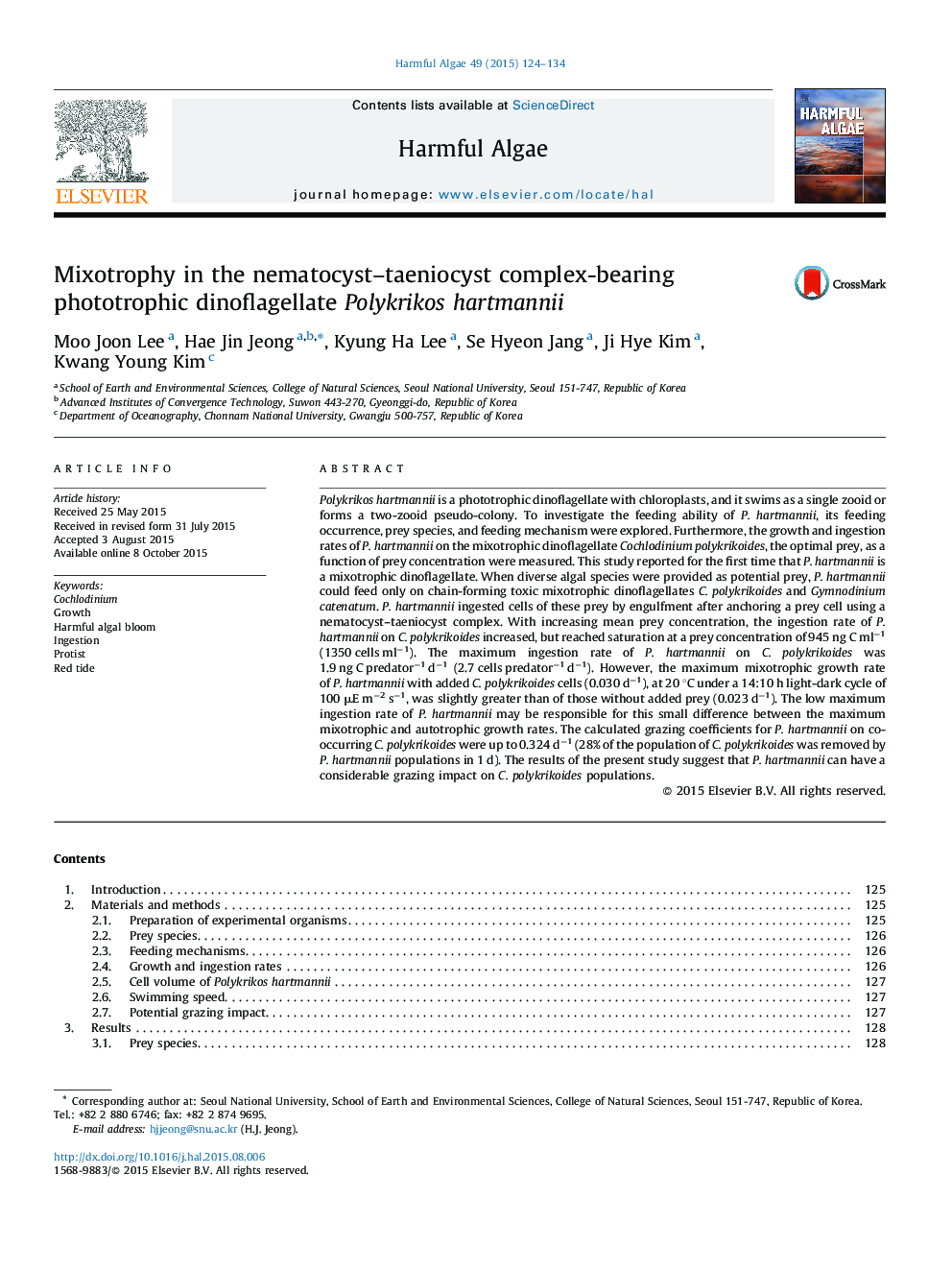| Article ID | Journal | Published Year | Pages | File Type |
|---|---|---|---|---|
| 4545224 | Harmful Algae | 2015 | 11 Pages |
•Polykrikos hartmannii was revealed to be a mixotrophic dinoflagellate.•P. hartmannii fed on only Cochlodinium polykrikoides and Gymnodinium catenatum.•Its mixotrophic growth rate was slightly greater than the autotrophic growth rate.•It could have a considerable grazing impact on C. polykrikoides populations.
Polykrikos hartmannii is a phototrophic dinoflagellate with chloroplasts, and it swims as a single zooid or forms a two-zooid pseudo-colony. To investigate the feeding ability of P. hartmannii, its feeding occurrence, prey species, and feeding mechanism were explored. Furthermore, the growth and ingestion rates of P. hartmannii on the mixotrophic dinoflagellate Cochlodinium polykrikoides, the optimal prey, as a function of prey concentration were measured. This study reported for the first time that P. hartmannii is a mixotrophic dinoflagellate. When diverse algal species were provided as potential prey, P. hartmannii could feed only on chain-forming toxic mixotrophic dinoflagellates C. polykrikoides and Gymnodinium catenatum. P. hartmannii ingested cells of these prey by engulfment after anchoring a prey cell using a nematocyst–taeniocyst complex. With increasing mean prey concentration, the ingestion rate of P. hartmannii on C. polykrikoides increased, but reached saturation at a prey concentration of 945 ng C ml−1 (1350 cells ml−1). The maximum ingestion rate of P. hartmannii on C. polykrikoides was 1.9 ng C predator−1 d−1 (2.7 cells predator−1 d−1). However, the maximum mixotrophic growth rate of P. hartmannii with added C. polykrikoides cells (0.030 d−1), at 20 °C under a 14:10 h light-dark cycle of 100 μE m−2 s−1, was slightly greater than of those without added prey (0.023 d−1). The low maximum ingestion rate of P. hartmannii may be responsible for this small difference between the maximum mixotrophic and autotrophic growth rates. The calculated grazing coefficients for P. hartmannii on co-occurring C. polykrikoides were up to 0.324 d−1 (28% of the population of C. polykrikoides was removed by P. hartmannii populations in 1 d). The results of the present study suggest that P. hartmannii can have a considerable grazing impact on C. polykrikoides populations.
